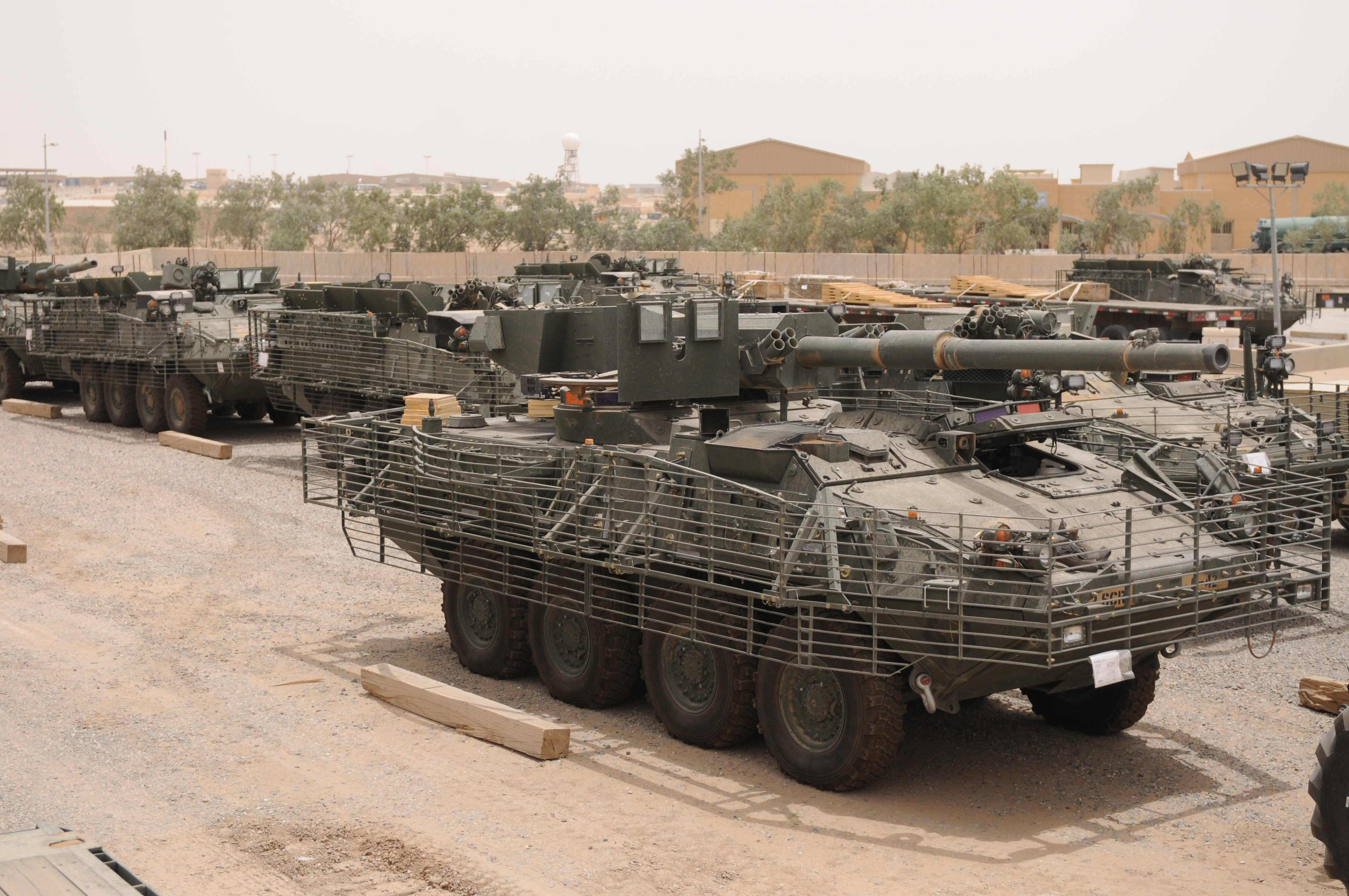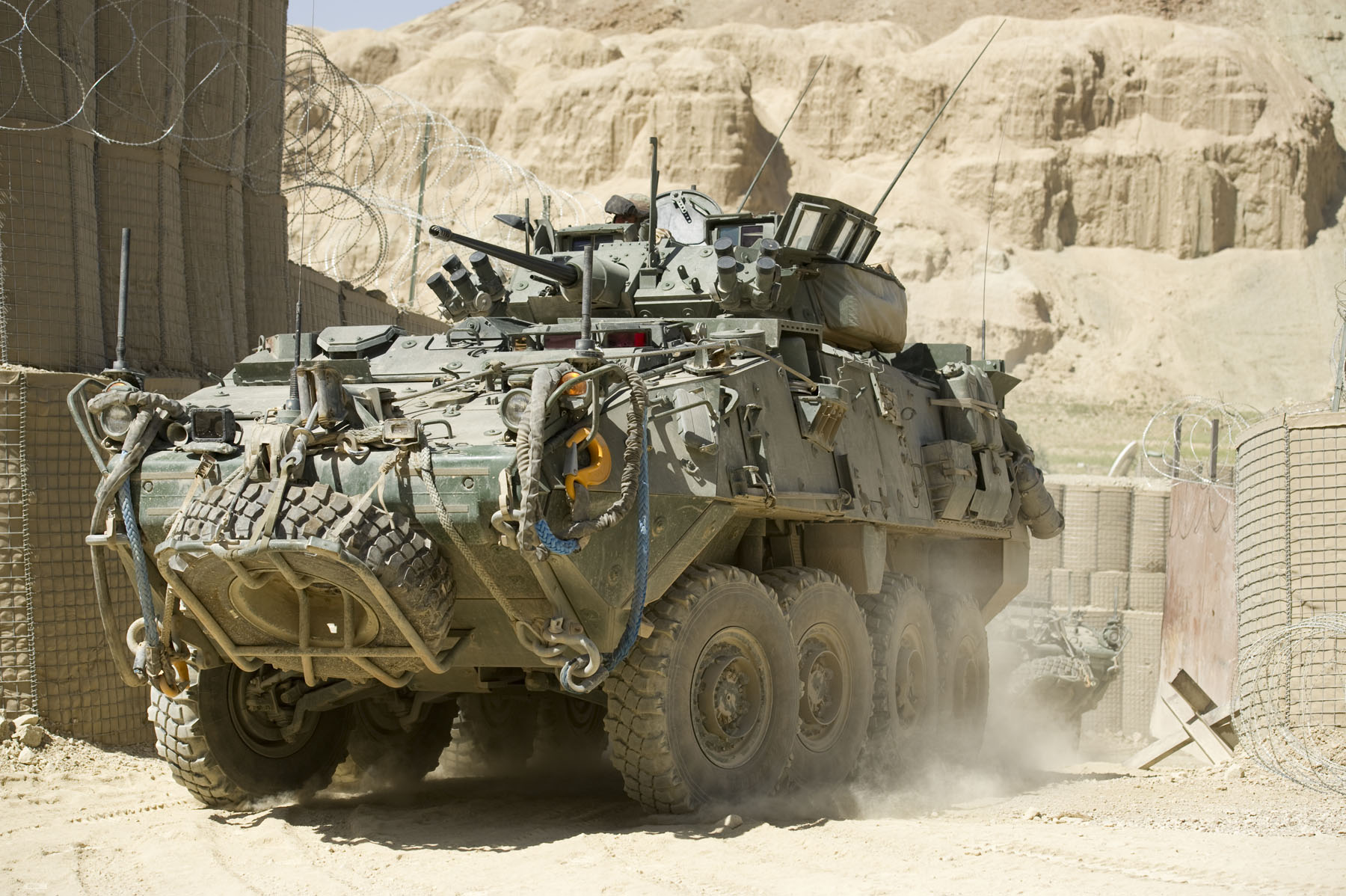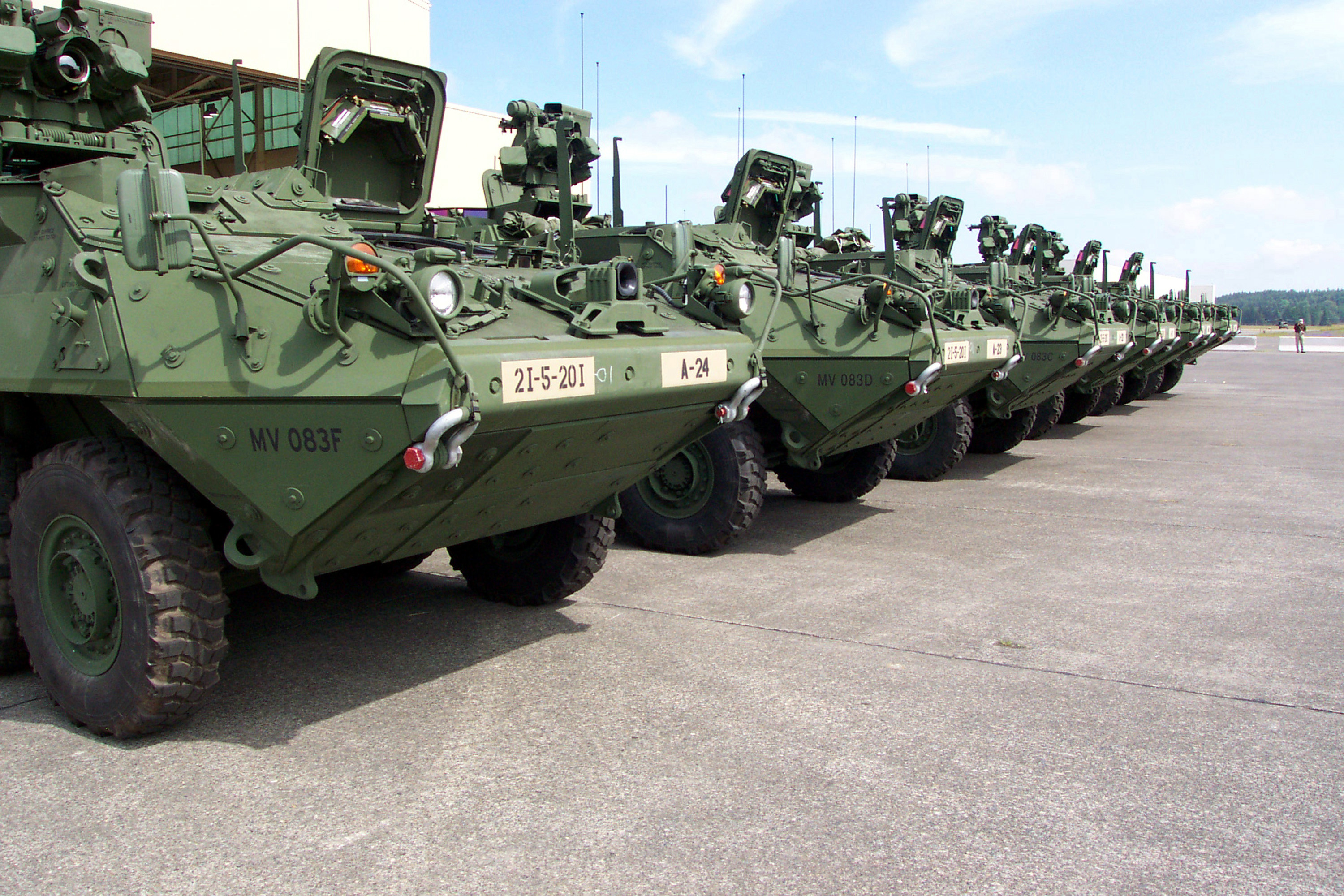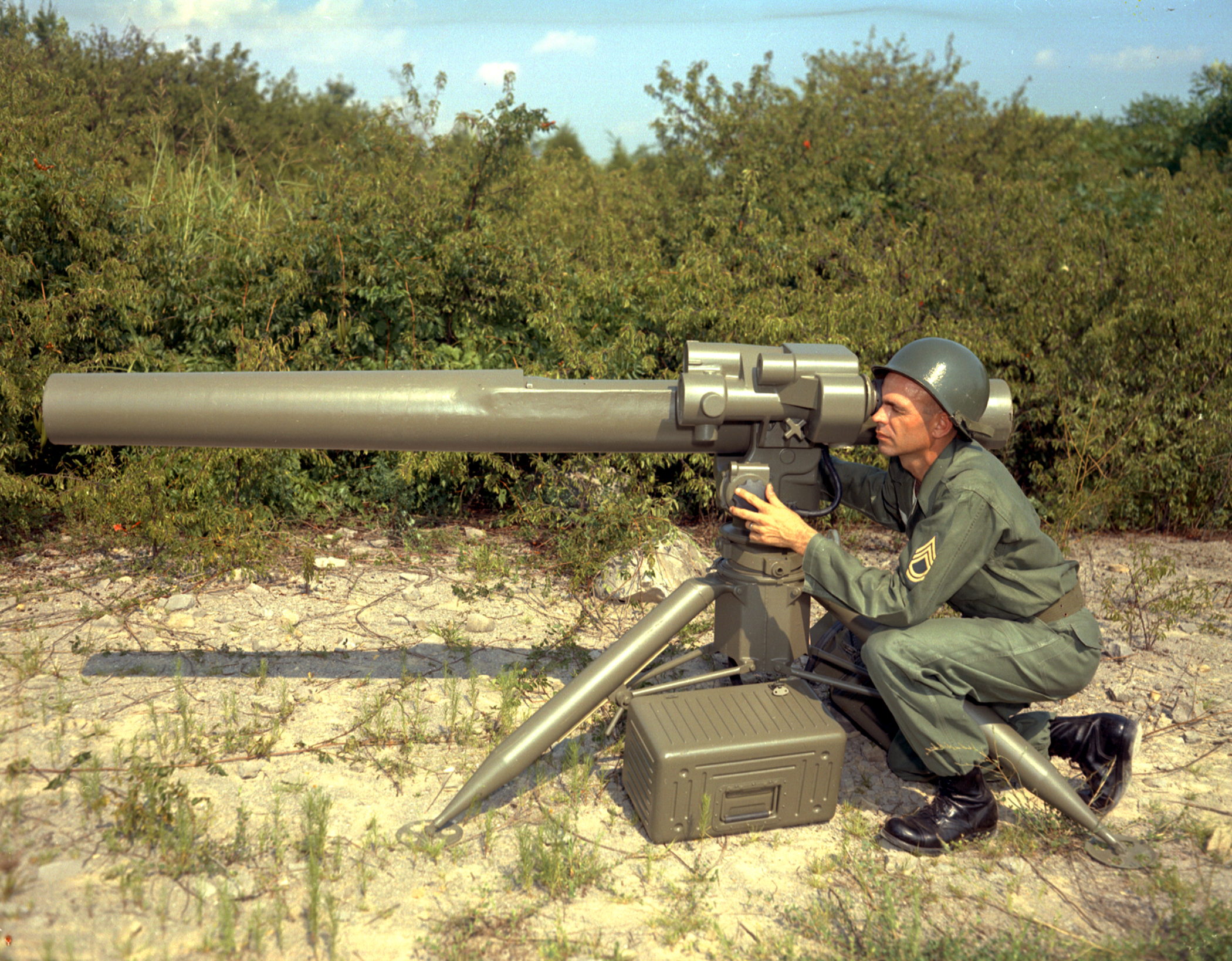|
M8 Armored Gun System
The M8 Armored Gun System (AGS), sometimes known as the Buford, is an American light tank that was intended to replace the M551 Sheridan and TOW missile-armed Humvees in the 82nd Airborne Division and 2nd Armored Cavalry Regiment (2nd ACR) of the U.S. Army respectively. The M8 AGS began as a private venture of FMC Corporation, called the Close Combat Vehicle Light (CCVL), in 1983. The Army began the Armored Gun System program to develop a mobile gun platform that could be airdropped. By 1992, the AGS was one of the Army's top priority acquisition programs. The service selected FMC's CCVL over proposals from three other teams. The service sought to purchase 300 AGS systems to begin fielding in 1997. The Army canceled the M8 AGS program in 1996 over the objections of Congress and the Department of Defense, due to the service's budgetary constraints. The Sheridan was retired without a true successor. The AGS never saw service, though the 82nd Airborne sought to press a limited nu ... [...More Info...] [...Related Items...] OR: [Wikipedia] [Google] [Baidu] |
Aberdeen Proving Ground
Aberdeen Proving Ground (APG) (sometimes erroneously called Aberdeen Proving ''Grounds'') is a U.S. Army facility located adjacent to Aberdeen, Harford County, Maryland, United States. More than 7,500 civilians and 5,000 military personnel work at APG.There are 11 major commands among the tenant units, including: * United States Army Communications-Electronics Command (CECOM) * United States Army Combat Capabilities Development Command (CCDC) * United States Army Test and Evaluation Command (ATEC) * Edgewood Arsenal * Adelphi Laboratory Center **The Army Reserve Information Operations Command **Unified Cross Domain Services Management Office **HQ, U.S. Army Contracting Command (Army Contracting Command –APG, Adelphi Contracting Division) **U.S Army 93rd Signal Network - Network Enterprise Center **Logistics Readiness Center **U.S. Army Cyber Operation Group – 335th Signal Command **Blossom Point Research Facility History APG is the U.S. Army's oldest active proving ground, est ... [...More Info...] [...Related Items...] OR: [Wikipedia] [Google] [Baidu] |
Tom Clancy
Thomas Leo Clancy Jr. (April 12, 1947 – October 1, 2013) was an American novelist. He is best known for his technically detailed espionage and military science, military-science storylines set during and after the Cold War. Seventeen of his novels have been bestsellers and more than 100 million copies of his books have been sold. His name was also used on movie scripts written by ghostwriters, nonfiction books on military subjects occasionally with co-authors, and video games. He was a part-owner of his hometown Major League Baseball team, the Baltimore Orioles of the American League, and vice-chairman of their community activities and public affairs committees. Originally an insurance agent, his literary career began in 1984 when he sold his first military thriller novel ''The Hunt for Red October'' for $5,000 published by the small academic Naval Institute Press of Annapolis, Maryland. His works ''The Hunt for Red October'' (1984), ''Patriot Games'' (1987), ''Clear and ... [...More Info...] [...Related Items...] OR: [Wikipedia] [Google] [Baidu] |
M1128 Mobile Gun System
The M1128 Mobile Gun System (MGS) is an eight-wheeled armored car of the Stryker armored fighting vehicle family, mounting a 105 mm tank gun, based on the Canadian LAV III light-armored vehicle manufactured by General Dynamics Land Systems for the U.S. Army. The MGS program emerged after the 1996 cancelation of the Army's M8 Armored Gun System, the service's planned replacement for the M551 Sheridan light tank. The MGS will be retired by the end of 2022.The Army Is Ditching All of Its Stryker Mobile Gun Systems '' Military.com''. 12 May 2021. History [...More Info...] [...Related Items...] OR: [Wikipedia] [Google] [Baidu] |
Stryker
The Stryker is a family of eight-wheeled armored fighting vehicles derived from the Canadian LAV III. Stryker vehicles are produced by General Dynamics Land Systems-Canada (GDLS-C) for the United States Army in a plant in London, Ontario. It has four-wheel drive (8×4) and can be switched to all-wheel drive (8×8). The Stryker was conceived as a family of vehicles forming the backbone of a new medium-weight brigade combat team (BCT) that was to strike a balance between heavy armor and infantry. The service launched the Interim Armored Vehicle competition, and in 2000, the service selected the LAV III proposed by GDLS and General Motors Defense. The service named this family of vehicles the "Stryker". Ten variants of the Stryker were initially conceived, some of which have been upgraded with v-hulls. Development history Interim Armored Vehicle competition In October 1999, General Eric Shinseki, then U.S. Army Chief of Staff, outlined a transformation plan for the Army tha ... [...More Info...] [...Related Items...] OR: [Wikipedia] [Google] [Baidu] |
LAV III
The LAV III, originally named the Kodiak by the Canadian Army, is the third generation of the LAV (Canada), Light Armoured Vehicle (LAV) family of armored personnel carriers built by General Dynamics Land Systems – Canada (GDLS-C), a London, Ontario, based subsidiary of General Dynamics Land Systems, General Dynamics. It first entered service in 1999, succeeding the LAV II. It is the primary mechanized infantry vehicle of both the Canadian Army and the New Zealand Army. It also forms the basis of the Stryker vehicle used by the U.S. Army and other operators. The Canadian Army is upgrading its LAV IIIs to the LAV 6 standard. Development By July 1991, the Canadian Army, Canadian Armed Forces had identified the need to replace their aging fleet of 1960s and 1970s era armoured personnel carriers. As a result, $2.8 billion was earmarked for the TH-495, Multi-Role Combat Vehicle (MRCV) project by the sitting Progressive Conservative Party of Canada, Conservative government. The manda ... [...More Info...] [...Related Items...] OR: [Wikipedia] [Google] [Baidu] |
Interim Armored Vehicle
The Interim Armored Vehicle (IAV) was a U.S. Army armored fighting vehicle acquisition program. General Dynamics Land Systems (GDLS) and General Motors Defense proposed a vehicle based on the LAV III. The Army selected the LAV III proposal over three other submissions. The LAV III was renamed Stryker. In a June 1999 communique, Army Chief of Staff Eric Shinseki said "our heavy forces are too heavy and our light forces lack staying power." He called for heavy units to be "more strategically deployable, and more agile with a smaller footprint, and light forces must be more lethal, survivable, and tactically mobile." In remarks at Association of the United States Army meeting in October, Shinseki laid out his vision for a lighter, more transportable force. He called for a mid-weight unit that would strike a balance between heavy armor and infantry. Shinseki said such a unit would be especially capable for operations short of war. The Army was to do this by investing in an interim ... [...More Info...] [...Related Items...] OR: [Wikipedia] [Google] [Baidu] |
United Defense
United Defense Industries (UDI) was an American defense contractor which became part of BAE Systems Land & Armaments after being acquired by BAE Systems in 2005. The company produced combat vehicles, artillery, naval guns, missile launchers and precision munitions. History The company started as a division of the agricultural machine business, Food Machinery Corporation (FMC), when they won a US Federal Government contract to build the Landing Vehicle Tracked (LVT) and became a weapon manufacturer during World War II. Bowen McLaughlin York (BMY), which became the BMY division of Harsco Corporation, soon added aircraft and tanks to its growing munitions capability, further adding to the firm's diversified economic success and defense specialization. Following a massive decline in orders for tracked combat vehicles between 1983 and 1994 FMC and the Harsco Corporation agreed in January 1994 to combine their defense businesses to form United Defense. The new company owned the forme ... [...More Info...] [...Related Items...] OR: [Wikipedia] [Google] [Baidu] |
Airdrop
An airdrop is a type of airlift in which items including weapons, equipment, humanitarian aid or leaflets are delivered by military or civilian aircraft without their landing. Developed during World War II to resupply otherwise inaccessible troops, themselves often airborne forces, airdrops can also refer to the airborne assault itself. History Early airdrops were conducted by dropping or pushing padded bundles from aircraft. Later, small crates fitted with parachutes were pushed out of aircraft side cargo doors. Later, cargo aircraft were designed with rear access ramps, lowerable in flight, that allowed large platforms to be rolled out the back. As aircraft grew larger, the U.S. Air Force and Army developed ''low-level extraction'', allowing vehicles like light tanks, armored personnel carriers and other large supplies to be delivered. Propaganda leaflets are another commonly airdropped item. Airdrops evolved to include massive bombs as payload. The 15,000-pound (6,800&n ... [...More Info...] [...Related Items...] OR: [Wikipedia] [Google] [Baidu] |
2nd Stryker Cavalry Regiment
The 2nd Cavalry Regiment, also known as the 2nd Dragoons, is an active Stryker infantry and cavalry regiment of the United States Army. The Second Cavalry Regiment is a unit of the United States Army Europe and Africa, with its garrison at the Rose Barracks in Vilseck, Germany. It can trace its lineage back to the early part of the 19th century. In addition to its two current names, former names are 2nd Riflemen, 2nd Dragoons, 2nd Constabulary Regiment, 2nd Armored Cavalry, 2nd Cavalry (Light), and 2nd Stryker Cavalry. Previous names and dates Previous designations of the regiment: 2nd Regiment of Dragoons (May 1836 – March 1843, April 1844 – August 1861); 2nd Regiment of Riflemen (March 1843 – April 1844); 2nd US Cavalry Regiment (August 1861 – July 1942); 2nd Cavalry Regiment (Mechanized) (January 1943 – December 1943); 2nd Cavalry Group (Mechanized) (December 1943 – July 1946); 2nd Constabulary Regiment (July 1946 – November 1948); 2nd Armored Cavalry R ... [...More Info...] [...Related Items...] OR: [Wikipedia] [Google] [Baidu] |
82nd Airborne Division (United States)
The 82nd Airborne Division is an airborne infantry division of the United States Army specializing in parachute assault operations into denied areasSof, Eric"82nd Airborne Division" ''Spec Ops Magazine'', 25 November 2012. Archived from thoriginalon 1 September 2017. with a U.S. Department of Defense requirement to "respond to crisis contingencies anywhere in the world within 18 hours".82nd Airborne Division Army.mil, dated 16 May 2018, last accessed 11 September 2018 Based at , the 82nd Airborne Division is part of the . The 82nd Ai ... [...More Info...] [...Related Items...] OR: [Wikipedia] [Google] [Baidu] |
Humvee
The High Mobility Multipurpose Wheeled Vehicle (HMMWV; colloquial: Humvee) is a family of light, four-wheel drive, military trucks and utility vehicles produced by AM General. It has largely supplanted the roles previously performed by the original jeep, and others such as the Vietnam War-era M151 jeep, the M561 "Gama Goat", their M718A1 and M792 ambulance versions, the Commercial Utility Cargo Vehicle, and other light trucks. Primarily used by the United States military, it is also used by numerous other countries and organizations and even in civilian adaptations. The Humvee saw widespread use in the Gulf War of 1991, where it navigated the treacherous desert terrain; this usage helped to inspire civilian Hummer versions. The vehicle's original unarmored design was later seen to be inadequate. The vehicle was found to be particularly vulnerable to improvised explosive devices in the Iraq War. The U.S. hastily up-armored select models and replaced front-line units with the M ... [...More Info...] [...Related Items...] OR: [Wikipedia] [Google] [Baidu] |
TOW Missile
The BGM-71 TOW ("Tube-launched, Optically tracked, Wire-guided") is an American anti-tank missile. TOW replaced much smaller missiles like the SS.10 and ENTAC, offering roughly twice the effective range, a more powerful warhead, and a greatly improved semi-automatic command to line of sight (SACLOS) that could also be equipped with infrared cameras for night time use. First produced in 1970, TOW is one of the most widely used anti-tank guided missiles. It can be found in a wide variety of manually carried and vehicle-mounted forms, as well as widespread use on helicopters. Originally designed by Hughes Aircraft in the 1960s, the weapon is currently produced by Raytheon. History Previous designs Late in World War II, the German Army began experimenting with modified versions of the Ruhrstahl X-4 wire-guided missile. Originally developed for the ''Luftwaffe'' as an anti-bomber weapon, by changing the warhead to one using a high-explosive anti-tank (HEAT) design, the new X-7 vers ... [...More Info...] [...Related Items...] OR: [Wikipedia] [Google] [Baidu] |







